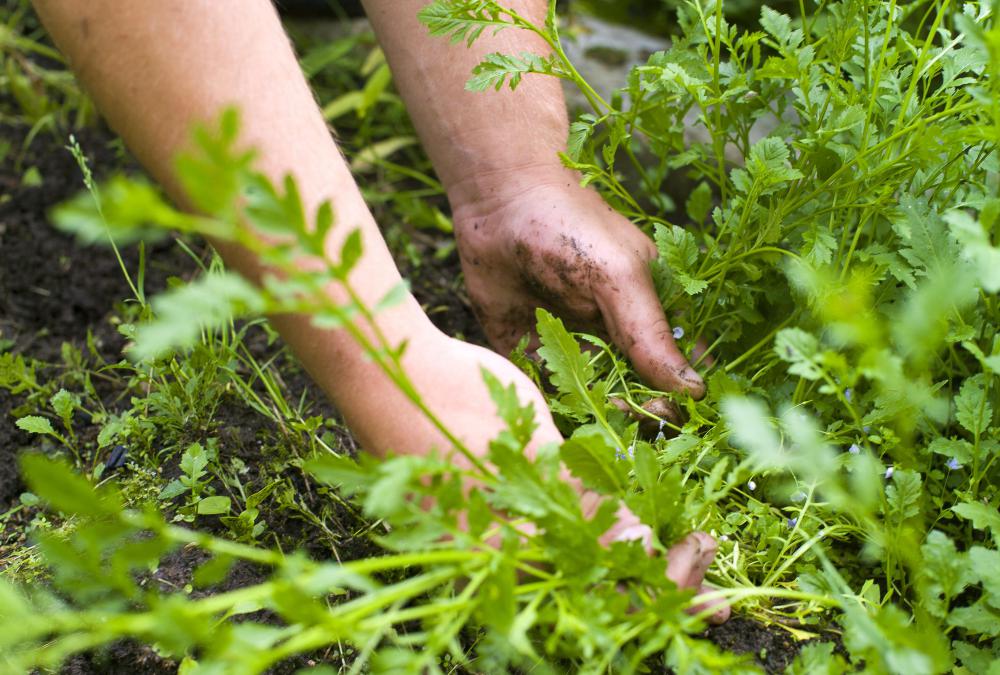At WiseGEEK, we're committed to delivering accurate, trustworthy information. Our expert-authored content is rigorously fact-checked and sourced from credible authorities. Discover how we uphold the highest standards in providing you with reliable knowledge.
What is Weed Matting?
Weed matting, also known as landscape fabric or weed control fabric, is a porous material used to suppress garden weeds by blocking sunlight and creating a barrier. It is laid flat on the surface of the soil with holes cut to accommodate existing plants, then covered with a layer of mulch, sand, gravel, or pine needles. When the material is properly installed, weeding should be virtually eliminated, though results can vary over time, depending on the type of matting used, garden-specific grasses, and other environmental factors.
Though people often think of weeds as springing up from the soil, they also invade gardens by air. Wind carries pollen to flowerbeds where it is deposited on top of mulch, which decays into a fertile bed. Weeds not only try to penetrate weed matting from below, but can also grow on top of it. Depending on the type of matting used, these weeds can be very easy or very difficult to remove.
A large variety of weed control fabric is available, made from various materials and offered in many different price categories. The three main classifications are thermally spunbonded (e.g. polypropylene), needle punched, and woven.

Of these, thermally spunbonded is reportedly the most resistant to weed growth, as the threads of the fabric are locked in place, providing little give. While tiny roots might penetrate this fabric over time, they are easily removed because the roots can’t tangle themselves within the fabric. Needle punched matting contains loose threads that can more easily allow weeds to push through. Woven matting, although strong, offers spaces within the weave pattern for tiny roots to penetrate. In the latter case, weed roots can actually network throughout the woven weed matting, making the weeds difficult to remove without displacing or even destroying the fabric.
Before installation, it's a good idea for gardeners to prepare the soil by adding compost and other necessary nutrients. Landscape fabric will make it more difficult, though not impossible, to add food and nutrients later.

While weed matting can reduce the need to spend time maintaining a flowerbed, some gardeners report poor plant growth over the long term after installing it. Others claim that, after leaving the fabric in place for several months, the soil beneath seemed to “die” or looked like cement. One the matting was removed, the soil seemed to return to normal. Some people use layers of newspaper or cardboard to block weeds, as these materials decompose with time and are organic. Others rely on a thick layer of mulch instead.
Weed matting can also be used beneath patio or walkway stones to prevent weeds from coming up between the rocks. It can also be installed beneath a thick layer of sand in a child’s play yard, or used to create a weed-free parking area. The fabric also reduces erosion and may be useful for keeping soil in place in certain types of landscaping designs.
People who want to use weed matting can find a number of brands online or at their local home improvement centers. In all cases, gardeners should be sure to cover it with a thick layer of mulch or other organic material to prevent premature decay of the fabric and to maintain a more natural looking plant bed.
AS FEATURED ON:
AS FEATURED ON:












Discuss this Article
Post your comments